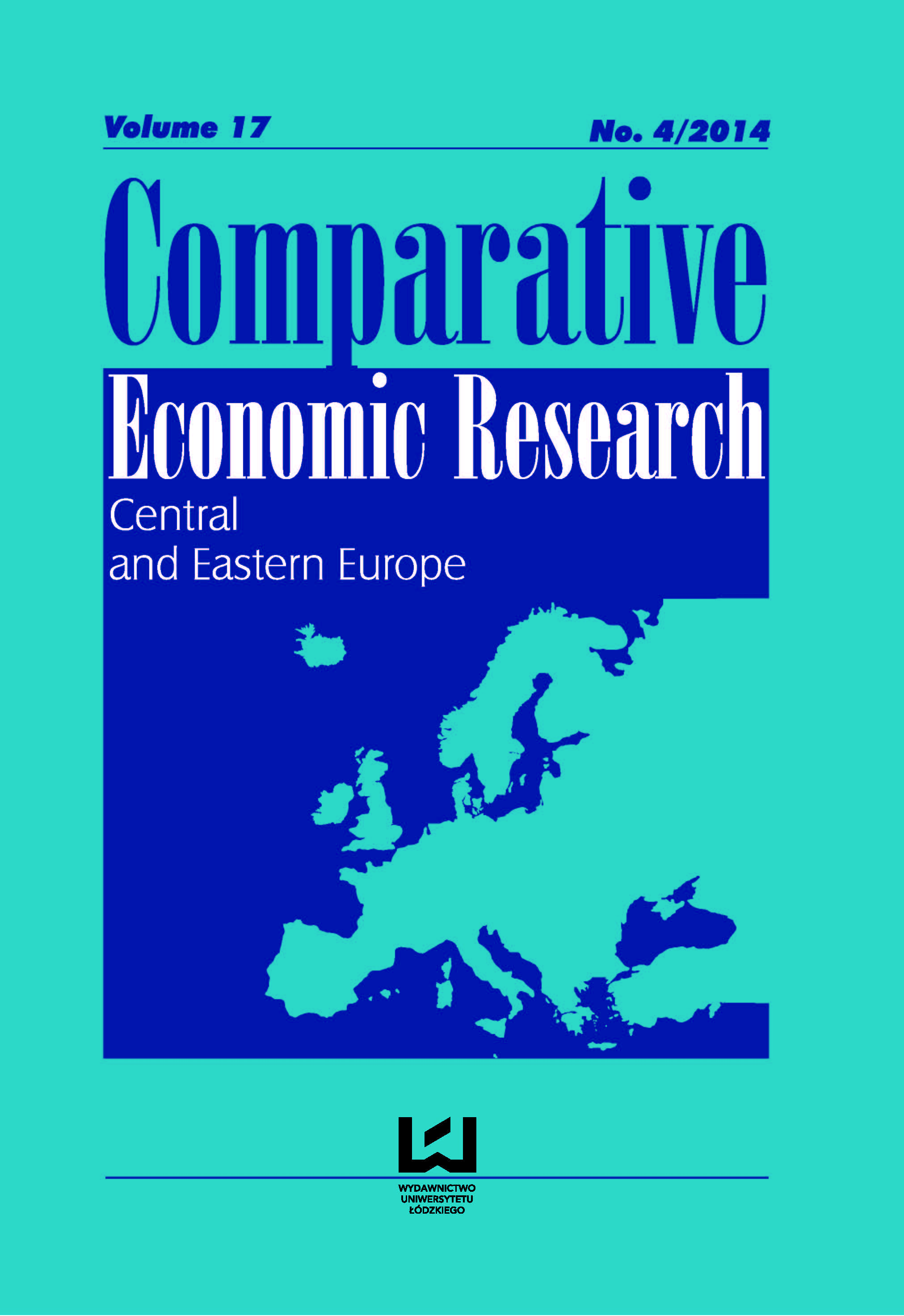Economic Development And Transfrontier Shipments Of Waste In Poland – Spatio-Temporal Analysis
DOI:
https://doi.org/10.2478/cer-2014-0029Keywords:
spatial panel data models, Environmental Kuznets Curve, sustainable development, waste management, spatial weight matricesAbstract
The aim of the paper is to apply the spatio-temporal Environmental Kuznets Curve (SpEKC) to test the relationship between economic growth and the amount of collected mixed municipal waste. The analysis was conducted at the level of sixty-six Polish sub-regions. The study contained selected environmental indicators. The dependent variable - the amount of municipal waste generated in kilograms per capita characterized the state of the environment. The GDP per capita in constant prices (as an explanatory variable) presented the level of economic development of the sub-regions. In the empirical part of the research there were used spatial panel data models based on EKCs. It determined the levels of economic development, at which the amount of produced wastes has fallen or increased, depending on the wealth of the region. The application of different types of spatial weight matrices was an important element of this modelling. Data obtained the years 2005-2012. Models were estimated in the RCran package.
Downloads
References
Antczak E. (2012), Aplikacja przestrzennych modeli panelowych do weryfikacji hipotezy Środowiskowej Krzywej Kuznetsa na przykładzie Polski, Roczniki Kolegium Analiz Ekonomicznych’, Zeszyt 27/2012, Warszawa.
Google Scholar
Antczak E. (2012), Wybrane aspekty zrównoważonego rozwoju Europy. Analizy przestrzennoczasowe, Wyd. Biblioteka, Łódź.
Google Scholar
Chief Inspector of Environmental Protection (2012), Transgraniczne przemieszczanie odpadów - nadzór i kontrola Inspekcji Ochrony Środowiska, Aura 9/2012.
Google Scholar
Council of European Union (2006), Review of the EU Sustainable Development Strategy (EU SDS) −Renewed Strategy, Brussels.
Google Scholar
Council of Ministers (2008), The National Environmental Policy for 2009-2012 and its 2016, Warsaw.
Google Scholar
EEA (2012), Movements of waste across the EU's internal and external borders, Kopenhaga.
Google Scholar
Holger R. (2010), Ekonomia zrównoważonego rozwoju. Teoria i praktyka, Zysk, Poznań.
Google Scholar
Ichinose D., Yamamoto M., Yoshida Y. (2011), The Decoupling of Affluence and Waste Discharge under Spatial Correlation: Do Richer Communities Discharge More Waste?, GRIPS Discussion Paper 11-07, Tokyo.
Google Scholar
Ministerstwo Środowiska (2010), Krajowy plan gospodarki odpadami 2014, Warszawa.
Google Scholar
Polish national Parliament (1996), The Act of 13th September 1996 on maintaining tidiness and order within communes, Warsaw.
Google Scholar
Stern D.I. (2004), The Rise and Fall of the Environmental Kuznets Curve, World Development Vol. 32, No. 8, Elsevier.
Google Scholar
Suchecki B. (2010), Ekonometria przestrzenna. Podstawowe metody i modele analizy danych przestrzennych, Beck, Warszawa.
Google Scholar
SWD (2102), Wojewódzki Plan Gospodarki Odpadami dla Województwa Dolnośląskiego 2012, Wrocław.
Google Scholar
Szpadt R. (2010), Prognoza zmian w zakresie gospodarki odpadami, Warszawa. Others:
Google Scholar
Basel Convention from: 22.03.1989., Polish status of ratification: 10.01.1992.
Google Scholar
Regulation (EC) No 1013/2006 of the European Parliament and of the Council of 14 June 2006 on shipments of waste, in Poland the act of 29 June 2007 on the international shipments of waste.
Google Scholar
www.recykling.pl
Google Scholar
www.epp.eurostat.ec.europa.eu
Google Scholar
www.wiedza.ekologia.pl
Google Scholar
http://spalarnie-odpadow.pl
Google Scholar
www.stat.gov.pl 24222435
Google Scholar
Downloads
Published
How to Cite
Issue
Section
License

This work is licensed under a Creative Commons Attribution-NonCommercial-NoDerivatives 4.0 International License.











